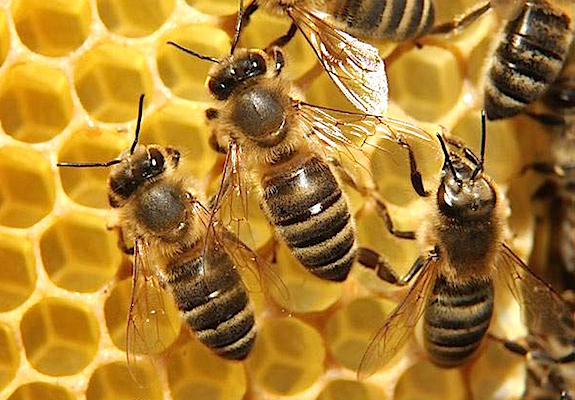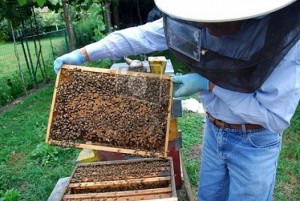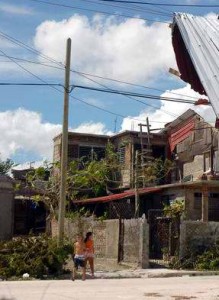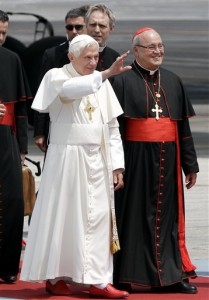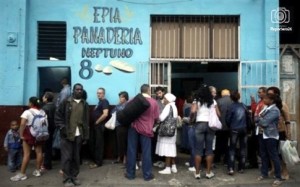
Cuban Apartheid, suffered by families who abandoned their homes and went to Havana in search of a new life
 Cubanet.org, Reinaldo Emilio Cosano Alen, Havana, 15 May 2015 – Rodolfo Castro, from Santiago de Cuba, met with three other young men detained at the Guanabo police station east of Havana. Driven to the Central Train Terminal in a patrol car – so that they could not escape – they were put on the train and deported to their provinces, following imposition of a fine of a thousand Cuban pesos – some 50 dollars – each. So says Osmany Matos, of Guanabo, arrested for a traffic offense who witnessed the incident.
Cubanet.org, Reinaldo Emilio Cosano Alen, Havana, 15 May 2015 – Rodolfo Castro, from Santiago de Cuba, met with three other young men detained at the Guanabo police station east of Havana. Driven to the Central Train Terminal in a patrol car – so that they could not escape – they were put on the train and deported to their provinces, following imposition of a fine of a thousand Cuban pesos – some 50 dollars – each. So says Osmany Matos, of Guanabo, arrested for a traffic offense who witnessed the incident.
The “Palestinians” (as they ironically call those who come from the eastern provinces) Yordanis Reina, Maikel Cabellero and Edilberto Ledesma, from the rural area El Parnaso; and Amaury Sera, from the Manati township, all in the Las Tunas province, explained to Graciela Orues Mena, independent trade unionist: continue reading
We went to work at Guira de Melena in Mayabeque province, because here either we don’t work or they pay a pittance, always hired by a farmer. One afternoon we were walking through the city with work clothes covered in red dirt, when two police officers asked us for identification. We were arrested and deported for the crime of ‘being illegal.’ They put us on the train with the warning that if we came back we would wind up in the courts. They didn’t let us collect our pay for the time we worked or change clothes or get our belongings. We spent so many hours hungry on the train, without money. An abuse.”
The Crime? Not having a registered address in Havana.
Independent lawyer Rene Lopez Benitez, resident of Arroyo Arenas in Havana, explains: “The Law Decree 217 of April 22, 1997, Internal Migratory Regulations for the City of Havana and its Contraventions, better known as the Internal Immigration Law, tries to control immigration to Havana (also to the capitals of the western provinces). They justify its application because of the dire housing situation, difficulty getting work, public transportation crisis, the supply of water, drainage, electricity, domestic fuel, sanitation, the low level of quality in the provision of other services, which put great pressure on the capital’s infrastructure. The Decree arranges for the eradication of illegal persons and settlements in Havana and the other provincial capitals with work of the Interior Ministry and the National Housing Institute. They have carried out thousands of deportations, forced evictions. Appeals to the Government and the Communist Party for legal protection are a waste of time. The evictions seriously undermine the integrity of entire families, including children and elderly people, who had achieved labor, social and personal stability.”
Slums surround the country’s western cities. There are onslaughts of demolitions “in the name of urban order and discipline in the charge of the Institute of Physical Planning, whose director is the Division General Samuel Rodiles, which intends to eradicate the slum areas that have emerged in the face of the government’s construction paralysis. Now – with the failure of the state initiative – they are trying to increase housing construction through their own efforts and a policy of bank credits and subsidies,” adds Lopez.

Acts of rebellion across the island against the evictions have managed to paralyze some removals and building collapses.
Resolution 267 of Internal Immigration is at odds with recent laws related to self-employment and Housing. Says Lopez:
“On October 7 of 2010 the Minister of Employment and Social Security issued Resolution 32-2010 arranging for the Regulation of the Practice of Self-Employment by which the restrictions of Law Decree 217 – among other reasons because of lack of work – do not have justification. Many go to the capital to work for themselves in the most varied trades to provide services in construction, plumbing, house cleaning, child care, health care, agriculture, trade, agricultural supplies, farming. Also the essential requirement of proving legality in housing in order to get a license to work is facilitated through Law Decree 288 from the October 28, 2011, Modifications to Law 65, General Law of Housing, in reference to the conveyance of property by buying and selling, inheritance and gift; and it supports the leasing of dwellings, rooms and spaces. All of which, in fact, would annul the restrictions of migration to the capital and decrease the record ‘floating population’ of almost half a million, according to the Housing and Population Census of September 2012.”
The most important thing would be to eliminate, above all, the inhumane deportation. People and even whole families abandoned their homes in order to work, study and try to move forward, but then they were deported like pariahs.
The Internal Immigration Law denies Article 13, Paragraph 1 of the Universal Declaration of Human Rights (1948): “All people have the right to freely move and to choose their place of residence within the borders of a nation.”
The construction industry, prosperous until 1958, was in rapid decline thereafter. Internal deportation for political reasons was used by the colonial Spanish government in the 19th century. Carlos Manuel de Cespedes (1819-1874), Founding Father, was banished to Contramaestre, near Bayamo, his hometown.
About the Author
 Reinaldo Emilio Cosano, Havana, May 1943, graduate in Philology from the University of Havana. He worked as a teacher the last 20 years of his career. He was removed teaching for lack of “political suitability,” as recorded in the minutes of his final dismissal. He was a member of the Cuban Committee for Human Rights and participated in the Cuban Democratic Coalition. He has written for more than ten years for CubaNet, through the Sindical Press agency, with email address of cosanoalen@yahoo.com
Reinaldo Emilio Cosano, Havana, May 1943, graduate in Philology from the University of Havana. He worked as a teacher the last 20 years of his career. He was removed teaching for lack of “political suitability,” as recorded in the minutes of his final dismissal. He was a member of the Cuban Committee for Human Rights and participated in the Cuban Democratic Coalition. He has written for more than ten years for CubaNet, through the Sindical Press agency, with email address of cosanoalen@yahoo.com
Translated by MLK

